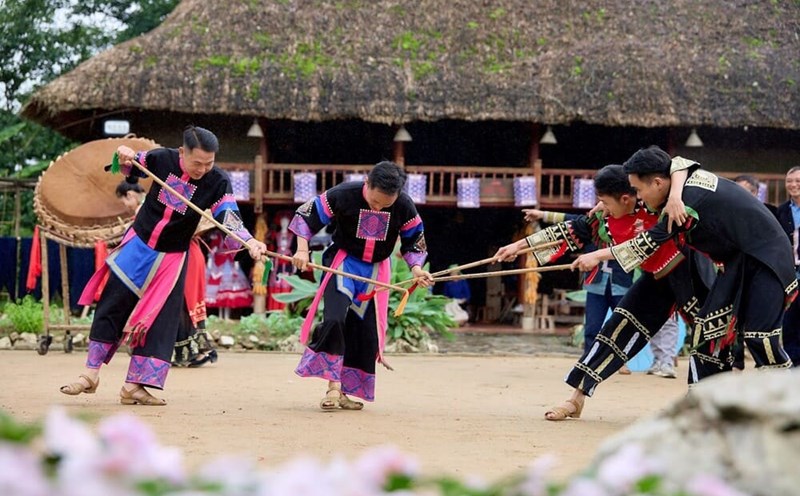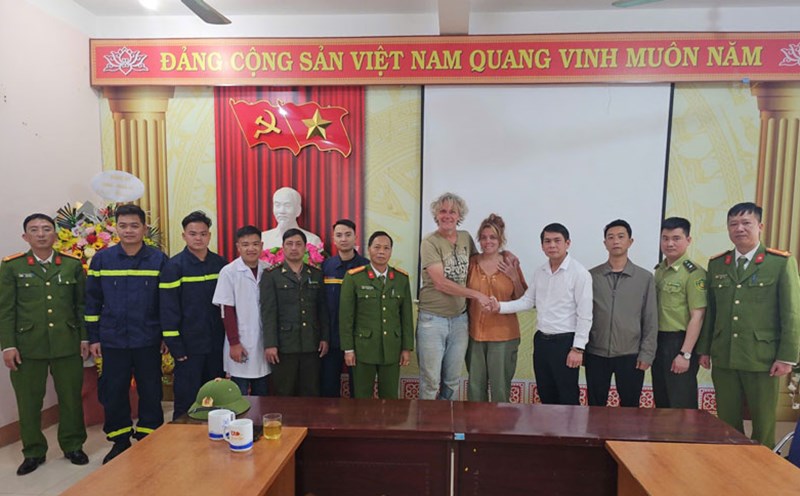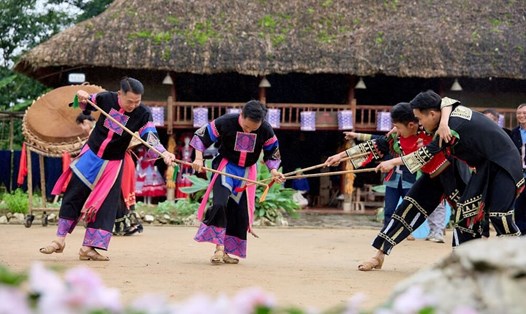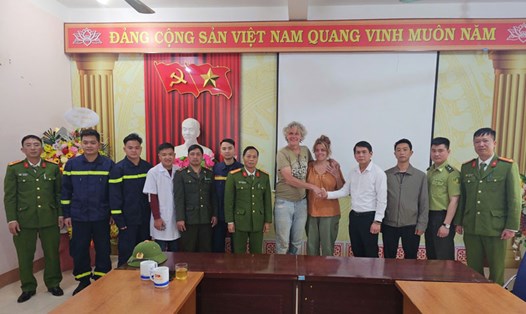The "three-in-one" job of port (a tour guide and carrying goods for tourists) can be freelance, accommodation for private groups of tourists, or register to work for travel companies for 300,000 - 600,000 VND/trip to help tourists conquer Fansipan.
There are no exact statistics, but according to Sa Pa commune's estimates, during the two peak seasons (March - April and August - September every year), dozens of groups set out to conquer Fansipan peak at an altitude of 3,143m every day. On average, each group of 30 people needs 10 - 15 porter to carry and take care of logistics. Most of them are H'Mong young people, aged from 18 to 40, healthy, agile, and familiar with the mountains and forests.
On those shoulders were loads of goods weighing 20 - 30kg. They crossed muddy, slippery slopes, sometimes giving way to the beautiful road for customers but chose a more rough, dangerous route. There are nights sleeping on the stomach under the cold rain in the forest, then hastily boiling water to make noodles in the early morning for customers to watch the sunrise on the "roof of Indochina".
Mr. Ma A Cho, who is over 50 years old this year and is considered the first tour guide to conquer Fansipan, said: In 1988, a group of Russian tourists came to him to ask him to guide them. For three days and two nights, he carried food and water, searched the road, and cut down tree branches to avoid getting lost.
The first time I stood on the top of Fansipan when I was 18 years old, I felt strange and extremely proud, he recalled.
In the 1990s, when Sa Pa tourism began to receive attention, Mr. Cho cooperated with tourism companies, receiving 100,000 - 150,000 VND/day. In 2010, he took on customers himself and brought his son and his relatives to the job.
In the village, every young man knows how to go to the forest, but not everyone can endure the hardship of porter, he said.
His most memorable moments are trips to storms and cold. Once the whole group climbed up to 2,800m and had to return because it was forecast to have snow.
According to Mr. Cho, a port is not just a carrying goods. They are both chefs, tour guides, and field doctors. On the way, they told visitors about wild plants, birds, and customs of ethnic minorities. When customers have a sore leg, they help, when customers are tired, they are willing to share a little warm water in the bottle.
cloud Carrier
Not only leading through the forest and carrying goods, many portals in Sa Pa also update trends, actively changing thinking to build many attractive tourism service models such as establishing tourism service cooperatives, homestays...
portins often build personal pages on social networking platforms such as Zalo, Facebook, Instagram, TikTok... to communicate local tourism. Through mountain climbing tours, portins are also "technicians" who record beautiful and strange camera angles; they are also good at finding check-in spots to satisfy tourists.
When doing the work of transporting in the clouds, we are aware of our responsibilities. I often work reasonably with other brothers and always accompany customers. If the group members separate due to physical problems, we keep a distance between groups to avoid getting lost, ensuring safety and health for each person - Mr. Hang A Tru - a port who has been in the profession for decades - shared.
According to the leader of Sa Pa ward, port portrait plays a significant role in the development of experiential and exploration tourism. Currently, the locality is coordinating with the Lao Cai Department of Culture, Sports and Tourism to develop a port port profession code, which requires a professional card, safety skills training, first aid and environmental protection.
In 2016, the Fansipan cable car was put into operation, helping many people easily reach the "roof of Indochina". However, mountain climbing trips by road still attract many challenging tourists. There, the portrait of the porters is still tireless in the clouds: Opening the way for visitors, cooking hot meals in the cold wind, setting up tents in the forest night.




